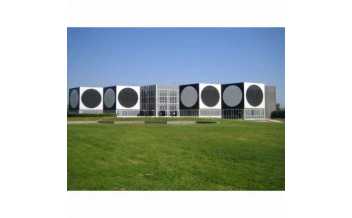Activities
-
-
-
Blockhaus d'Éperlecques, Éperlecques
The biggest bunker in northern France, this is a remarkable piece of Second...
-
Canal de Neufossé, Pas-de-Calais
Dating back to the 11th-century, this segment of the Canal Dunkerque-Escaut...
-
Canal de la Deûle, Pas-de-Calais
Much of the local population simply refers to the waterway as the Deûle,...
-
Canal du Nord, Pas-de-Calais
The canal connects the Canal latéral à l'Oise at Pont-l'Évêque to the Sensée...
-
-
Fondation Vasarely, Aix-en-Provence, Provence
Established in 1966, the museum is named after the 20th-century...
-
-
Forêt domaniale d'Écault, Pas-de-Calais
The forest’s multiple trails, natural biodiversity and historical remains...
-
Gare Saint Sauveur, Lille
Lille-Saint-Sauveur is a former goods station of Lille with some of the...
-
-
Il Museo di L'Hospice Comtesse, Lille
The former hospice houses a collection of paintings, tapestries, sculptures...
-
La Vieille Bourse, Lille
The Old Stock Exchange was built in 1651 under Philippe IV, King of Spain,...
-
Saint-Omer Cathedral, Caloterie
In the heart of a quiet quarter of Saint-Omer, this former Roman Catholic...
-
Saint-Étienne-au-Mont, Bénifontaine
Stretching over several kilometers, this northern French commune presents a...





















